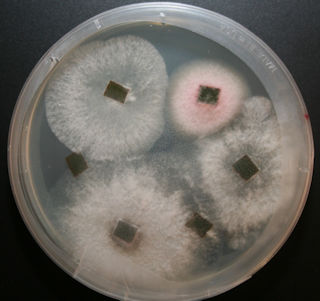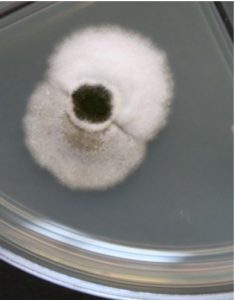Endophytes are microbes, bacteria and fungi, that inhabit the internal tissues of plants without causing any apparent symptoms, constituting part of the plant microbiome. The diversity and ecological roles of endophytes have not been well studied.
In the fall of 2013, the Tague lab began a long-term project to spatially and temporally map the endophyte species of Magnolia grandiflora, the Southern Magnolia. We share on this site the experiments and results of the Endophyte Lab.
Endophyte identification
We are identifying fungi by morphotype (“what do they look like”} and trying to keep the bins fairly large.
We see a few often and consistently: pinky, ghosty and slow opaque. Pinky is by the far the easiest to identify and so far we assume it is one species. Ghostly is likely more than one species, although longer term culturing seems to indicate one predominant species.
Both pinky and ghosty emerge early and grow quickly. A third (or more) morphotype emerges much more slowly: slowop, white, very opaque type.



